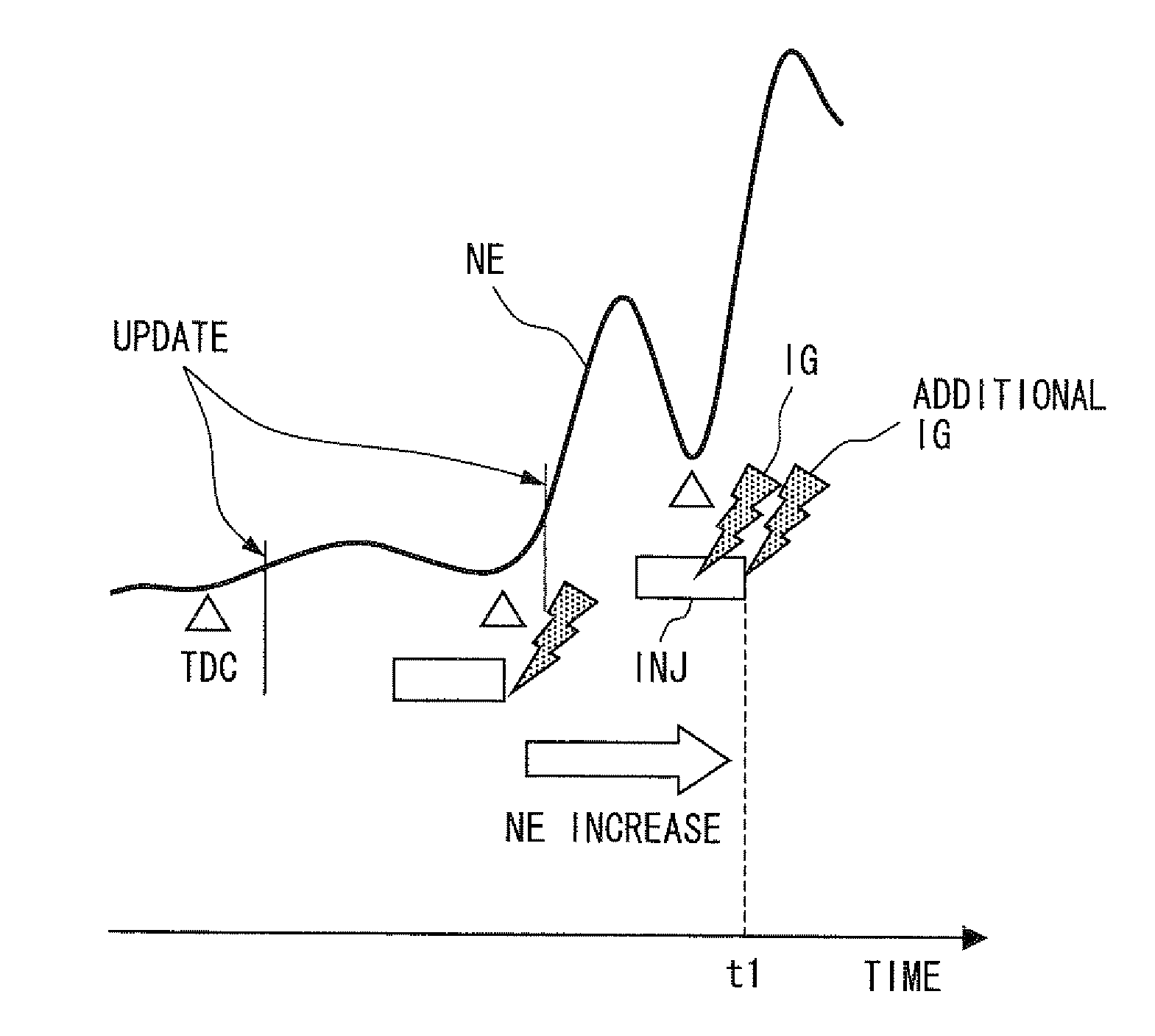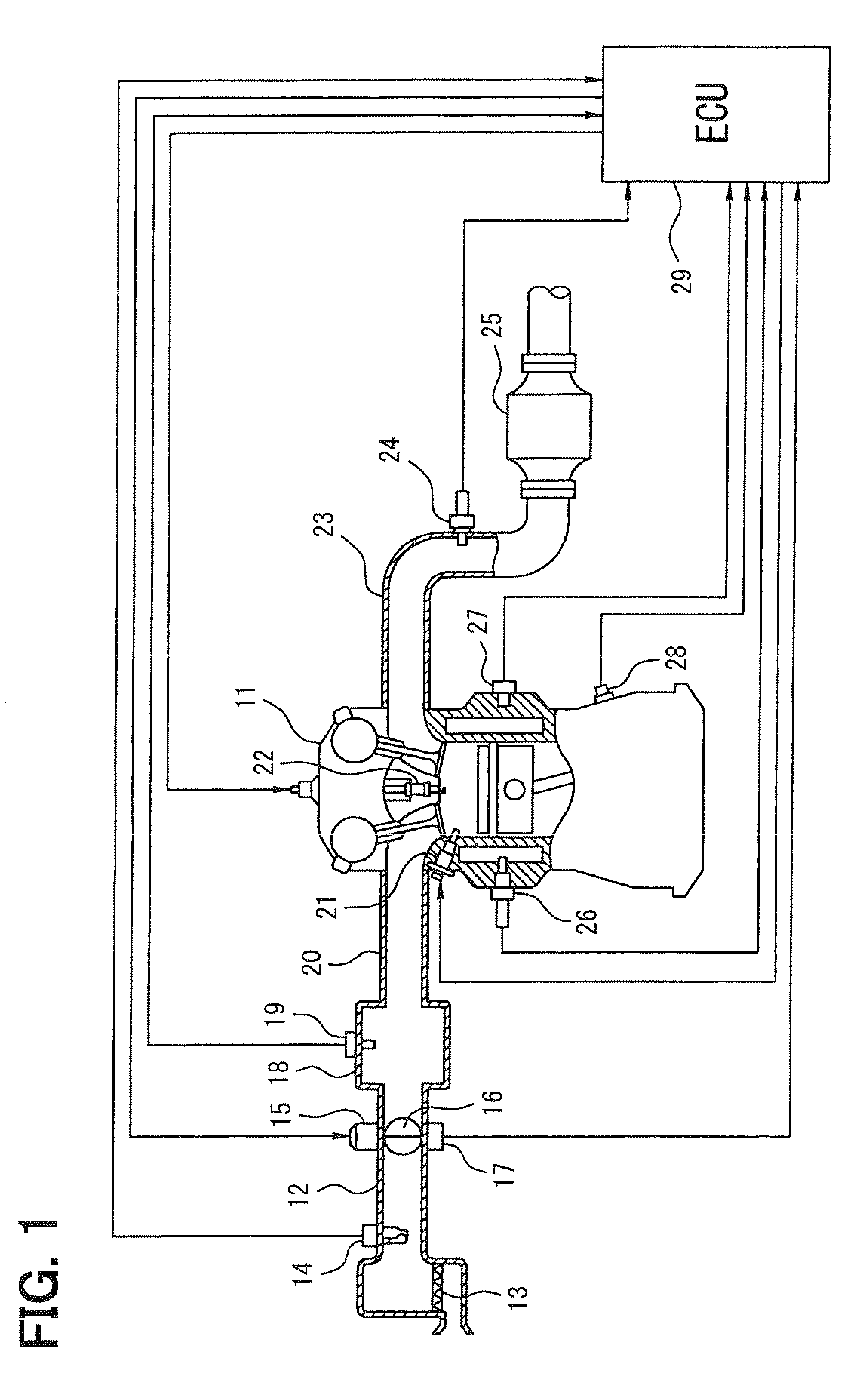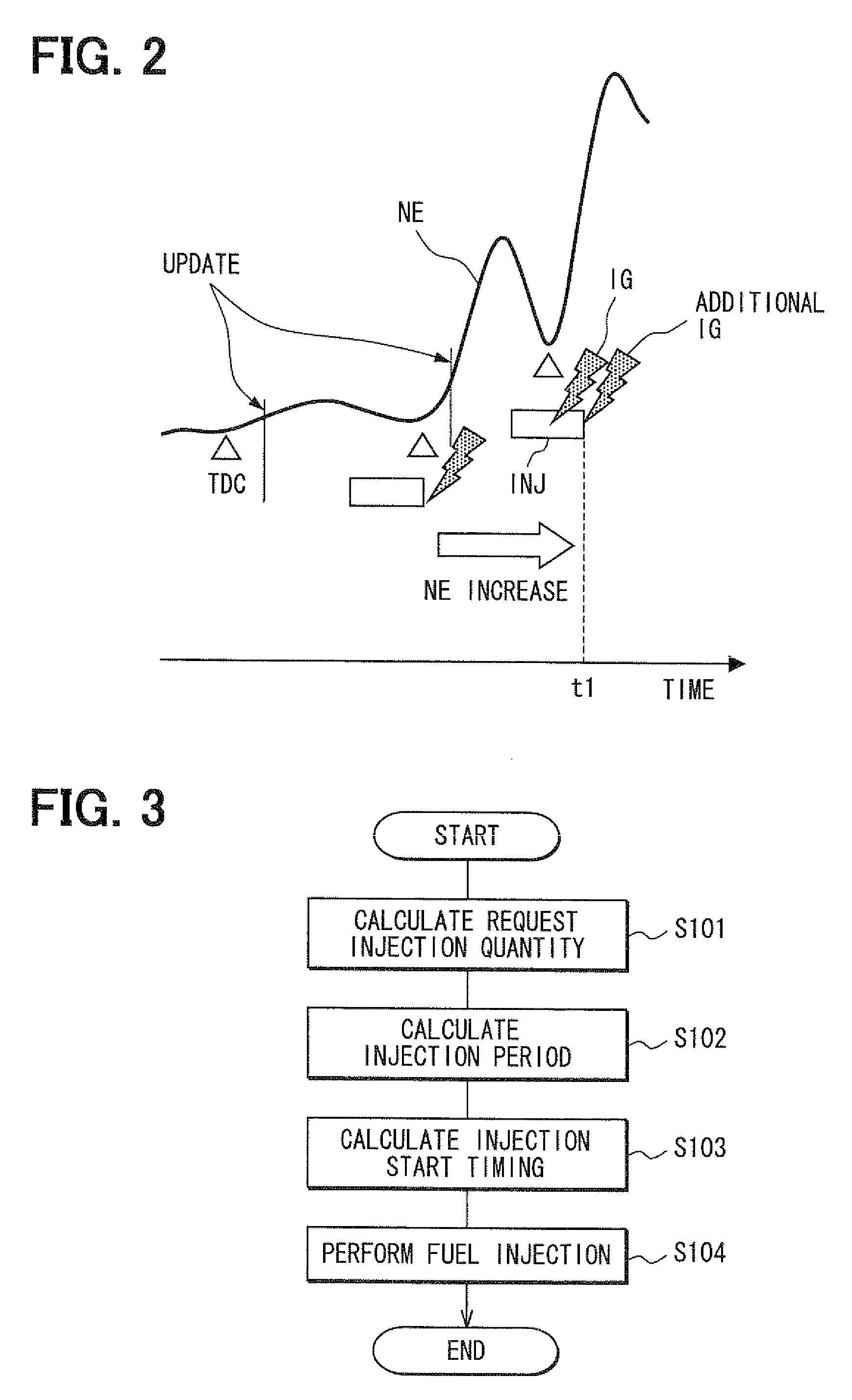Control device of direct injection internal combustion engine
a technology of control device and internal combustion engine, which is applied in the direction of automatic control, process and machine control, instruments, etc., can solve the problems of increasing hc emission quantity, torque reduction, etc., and achieve the effect of increasing rotation speed
- Summary
- Abstract
- Description
- Claims
- Application Information
AI Technical Summary
Benefits of technology
Problems solved by technology
Method used
Image
Examples
first embodiment
[0032]the present invention will be described with reference to FIGS. 1 to 5. First, a general configuration of an entire engine control system will be explained with reference to FIG. 1. An air cleaner 13 is provided in the most upstream portion of an intake pipe 12 of a direct injection engine 11 as a direct injection internal combustion engine. An airflow meter 14 for sensing an air intake quantity is provided downstream of the air cleaner 13. A throttle valve 16, whose opening degree is regulated by a motor 15, and a throttle position sensor 17 for sensing an opening degree of the throttle valve 16 (a throttle opening degree) are provided downstream of the airflow meter 14.
[0033]A surge tank 18 is provided downstream of the throttle valve 16, and an intake pipe pressure sensor 19 for sensing intake pipe pressure is provided in the surge tank 18. An intake manifold 20 for introducing the air into respective cylinders of the engine 11 is provided to the surge tank 18. Injectors 21...
second embodiment
[0049]Therefore, in the second embodiment, an additional ignition control routine shown in FIG. 7 (described in detail later) is executed. Thus, the additional ignition of the spark plug 22 is performed at timing t2 when a predetermined time α (for example, a time necessary for the injected fuel to be atomized) elapses after the actual injection end timing t1 of the injector 21.
[0050]Hereafter, processing contents of the additional ignition control routine of FIG. 7 will be explained. In the routine, it is determined whether the engine rotation speed NE is increasing in S401. When it is determined that the engine rotation speed NE is increasing, the process proceeds to S402. In S402, it is determined whether a predetermined time α has elapsed after the actual injection end timing t1 of the injector 21 of the present injection cylinder (for example, timing when the injector 21 is closed or the timing when the injection period has elapsed after the injection start timing of the inject...
third embodiment
[0055]In the third embodiment, an additional ignition control routine shown in FIG. 8 (described in detail later) is performed. Thus, an engine rotation speed increasing degree (for example, an increase amount of the engine rotation speed NE) due to the present combustion is sensed and the crank angle at the injection end timing of the injector 21 of the present injection cylinder is predicted based on the sensed engine rotation speed increasing degree. Then, the additional ignition is performed at the timing substantially the same as the predicted injection end timing.
[0056]Next, processing contents of the additional ignition control routine shown in FIG. 8 will be explained. In the routine, it is determined in S501 whether the engine rotation speed NE is increasing. When it is determined that the engine rotation speed NE is increasing, the process proceeds to S502, in which the engine rotation speed increasing degree due to the present combustion is calculated. In this case, for e...
PUM
 Login to View More
Login to View More Abstract
Description
Claims
Application Information
 Login to View More
Login to View More - R&D
- Intellectual Property
- Life Sciences
- Materials
- Tech Scout
- Unparalleled Data Quality
- Higher Quality Content
- 60% Fewer Hallucinations
Browse by: Latest US Patents, China's latest patents, Technical Efficacy Thesaurus, Application Domain, Technology Topic, Popular Technical Reports.
© 2025 PatSnap. All rights reserved.Legal|Privacy policy|Modern Slavery Act Transparency Statement|Sitemap|About US| Contact US: help@patsnap.com



